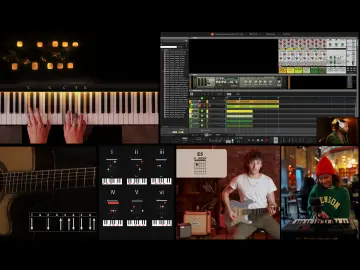Learning music with ADHD, autism or dyslexia? The problem isn’t you — it’s the method.
Music education still rewards one kind of learner: focused, calm, good at reading instructions. If that’s not you, the system can feel like a locked door. But that doesn’t mean you’re not musical.
This piece unpacks why so many neurodivergent people give up on music, and what finally makes it work — from flexible tools to feedback that fits your brain.
- When learning music doesn’t fit your brain
- What does neurodivergent actually mean?
- Music education still favours one kind of learner
- Famous neurodivergent musicians who didn’t fit the mould
- How to learn music when you're neurodivergent
- Why ArtMaster works well for neurodivergent learners
- Learn music your way — with real teachers or real-time AI
- FAQs: Neurodivergence & music learning
When learning music doesn’t fit your brain
Music lessons, in theory, should be a dream for a curious, creative kid. In practice, mine felt like an exam that never ended. Scales, sight-reading, stress. Not much room for instinct, and definitely no room to move.
I was learning cello — and like most classical training in the UK at the time, it came with a rigid rulebook. You played what was on the page, how it said to play it, and if your fingers didn’t behave, well, that was your fault. Or your effort. Or your “musicality.”
Looking back now — with a better grasp of neurodivergence, anxiety, and attention issues (all of which run in my family) — it’s painfully clear: the system wasn’t built for how my brain worked.
Today, there’s a much greater understanding of how different minds learn. We talk about ADHD and autism more openly. Some music teachers have adapted, new tools exist, and the conversation has moved on.
But for many of us, some damage has already been done. We were labelled difficult. Told we weren’t trying. Or quietly nudged away from music altogether.
What does neurodivergent actually mean?
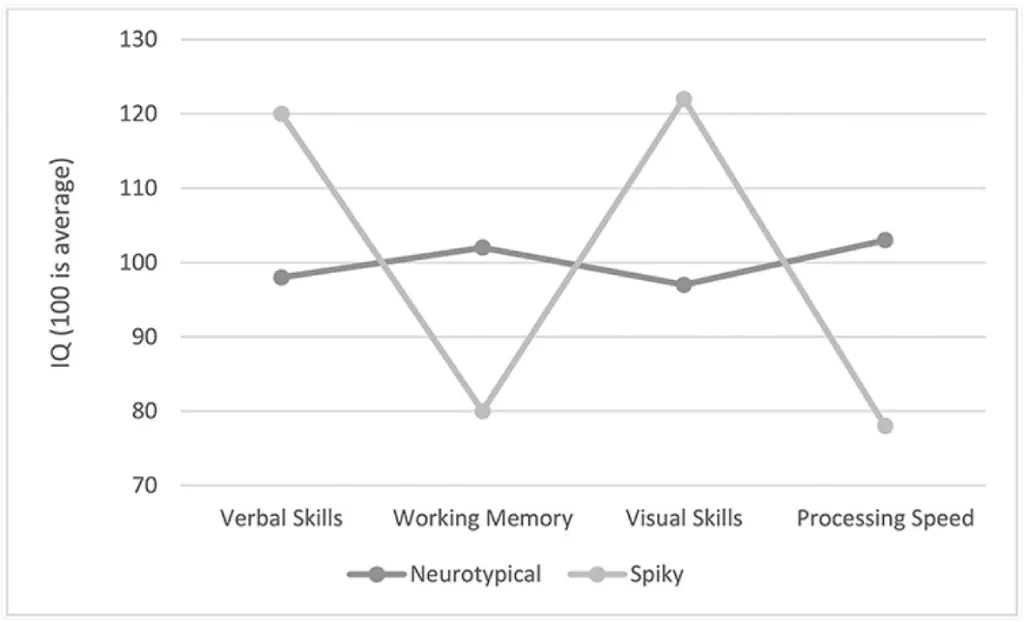 Image source: Doyle, N. (2020). Neurodiversity at work. British Medical Bulletin, 135(1), 108–125. Licensed under CC BY 4.0.
Image source: Doyle, N. (2020). Neurodiversity at work. British Medical Bulletin, 135(1), 108–125. Licensed under CC BY 4.0.
The word gets thrown around a lot — usually in a quick list: ADHD, autism, dyslexia, anxiety. But what does it really mean when it comes to learning music?
There’s a definition I came across from a psychologist that stuck with me. Neurodivergence isn’t about being ‘normal’ or ‘not normal.’ It’s about the shape of your abilities. Some things come easily, others are much harder — and the gaps between them can be wide.
This is known as a spiky profile. Your brain doesn’t run flat — it peaks in some areas and dips in others.
So maybe you’ve got a killer ear but a short attention span. Maybe rhythm clicks instantly but written instructions feel like wading through wet concrete. That’s still intelligence — just not the kind most music systems are built around.
It’s not that you can’t learn. It’s that the method doesn’t match your mind.
And looking back, that explains a lot about how I learned music as a kid.
💡ARTMASTER TIP: Music isn’t just a creative outlet — it’s proven to help with attention, stress, and learning. Here’s the science behind it.
Music education still favours one kind of learner
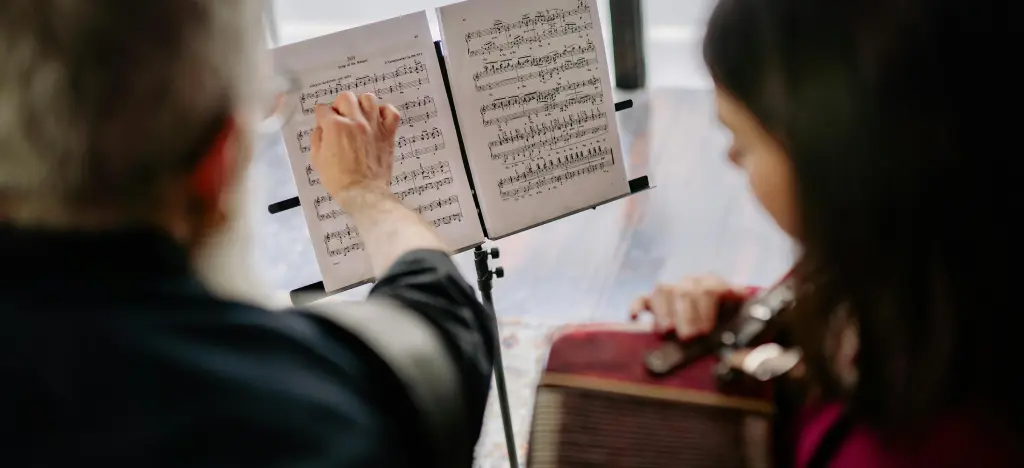 According to recent studies, between 15% and 20% of people are neurodivergent, worldwide. That includes ADHD, autism, dyslexia, and related conditions — often undiagnosed. Over 15 million adults in the U.S. have a diagnosis of ADHD, according to the CDC, and the actual number is likely much higher.
According to recent studies, between 15% and 20% of people are neurodivergent, worldwide. That includes ADHD, autism, dyslexia, and related conditions — often undiagnosed. Over 15 million adults in the U.S. have a diagnosis of ADHD, according to the CDC, and the actual number is likely much higher.
Yet despite these numbers, most music education still caters to one type of brain.
It assumes you can sit still. Focus for long stretches. Follow written instructions. Read music fluently. Stay motivated by structure and repetition. And if any of that’s hard, the blame quietly shifts to you.
But for neurodivergent learners — including plenty of brilliant, instinctive musicians — those assumptions just don’t hold.
💡ARTMASTER TIP: Think “I’m just not musical”? That voice probably came from a rigid classroom — not from your ability. Research shows becoming musical is about time, feedback, and practice — not innate talent. Discover how nearly anyone can become musical
 💡 Artie is unlike any other learning app
💡 Artie is unlike any other learning app
Artie listens in real time, spots what you need help with — rhythm, technique, finger strength — and gives instant spoken feedback. No rigid lessons. No pressure. Just clear, personalised guidance that adapts to your brain.
Join the waitlist for early access
Famous neurodivergent musicians who didn’t fit the mould
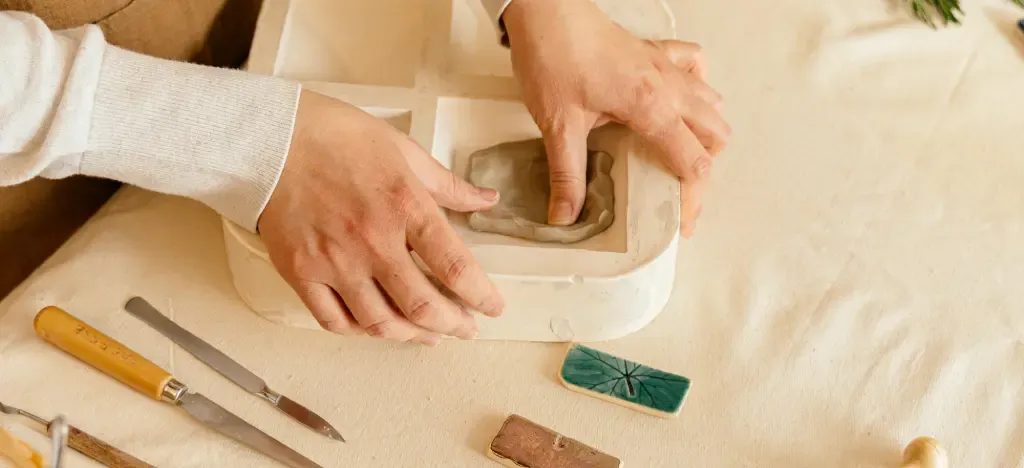 It’s easy to assume that successful musicians were all model students. But the reality is much messier — and much more human.
It’s easy to assume that successful musicians were all model students. But the reality is much messier — and much more human.
Grimes, the experimental pop artist, has spoken openly about her diagnoses of ADHD, autism, and likely dyslexia. In interviews, she’s said that earlier support could have saved her years of self-doubt.
Gary Numan, the pioneering electronic musician, was diagnosed with Asperger’s later in life and credits it with shaping his unique musical voice.
John Lennon, retrospectively believed to have had ADHD and dyslexia, famously couldn’t read music. He learned by ear, through repetition and experimentation — the way many neurodivergent people do best.
Contemporary pianist Nat Bartsch creates minimalist, pattern-based music informed by her experiences with autism and ADHD. She’s one of several artists redefining how musical expression and neurodiversity intersect.
And they’re not the only ones. From Courtney Love to Doja Cat, Billie Eilish, and Ariana Grande, more artists are now talking about their diagnoses, and challenging the idea that musical success comes from doing things “the right way.”
None of these musicians would’ve thrived in a rigid, sight-reading-heavy classroom. And yet, they’ve shaped the sound of a generation.
💡ARTMASTER TIP: Many of these artists didn’t just think differently — they also learned differently. Read how self-taught musicians broke the rules and built something new.
How to learn music when you're neurodivergent
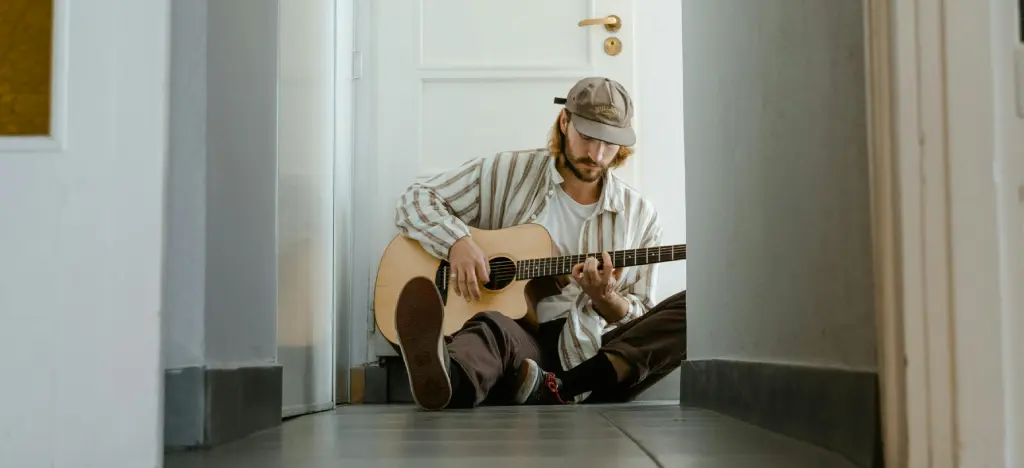 If traditional lessons don’t fit, what does?
If traditional lessons don’t fit, what does?
There’s no single “right” way to learn music — and that’s kind of the point. Loads of adults return to music later in life, often after realising they’re neurodivergent and finally understanding why the old approach felt so wrong.
Here are a few ways in that actually work:
1. Ditch the rulebook (at least for now)
You don’t need to read sheet music, memorise Italian terms, or practise scales for hours. Pick one song you love. Learn it by ear, follow a video, or use chord diagrams. Whatever helps you make sense of it.
💡ARTMASTER TIP: Try a simple 3-chord song, or one of these 4-chord songs.
2. Chunk everything down
Forget forcing through whole pieces. Chunking means breaking music into small, manageable bits — one riff, rhythm, or line at a time.
3. Use visual tools
Coloured notes. Animated tutorials. Falling blocks. Anything that shows structure rather than expecting you to memorise it. These work because they show you what’s happening — they don’t just tell you.
4. Learn through patterns, not paper
Many neurodivergent musicians respond better to shape and sound than dots on a page. Guitar chords, piano patterns, rhythm loops — these often feel more natural than translating notation.
💡ARTMASTER TIP: Find out more about musical patterns.
5. Improvise — seriously
Messing around isn’t a waste of time. Improvising helps you connect with your instrument, explore your sound, and build confidence — all without needing to get it “right.”
6. Move while you play
Some people focus better when they’re moving. Tap, sway, pace — whatever helps you stay grounded. There’s no rule that says you have to sit like a statue to be a musician.
7. Keep it short — and stop before you crash
Focus often fades fast, especially with ADHD or anxiety. Try 10–15 minute bursts. Stop before you feel scrambled. You’ll build momentum without burnout.
8. Use tech that adapts to you
Look for tools that give real-time feedback and adjust to your pace — not ones that expect perfect sight-reading or rigid structure. That’s exactly what Artie, our AI piano teacher, was designed for. He listens to how you play, spots what needs work, and gives instant spoken feedback — no guessing, no judgment.
9. Get feedback, not grades
Traditional music lessons often feel like a test. But what you need is encouragement — someone (or something) that nudges you forward without making you feel like a failure.
10. Give yourself permission to just play
You don’t need to prove anything. You don’t have to “catch up.” You’re allowed to learn in a way that works for your brain — and enjoy it, even if no one’s marking you out of ten.
💡ARTMASTER TIP: If you learn best by seeing patterns and making connections, this guide to chord progressions is built for you — no sheet music, just clear visuals and real examples.
Why ArtMaster works well for neurodivergent learners
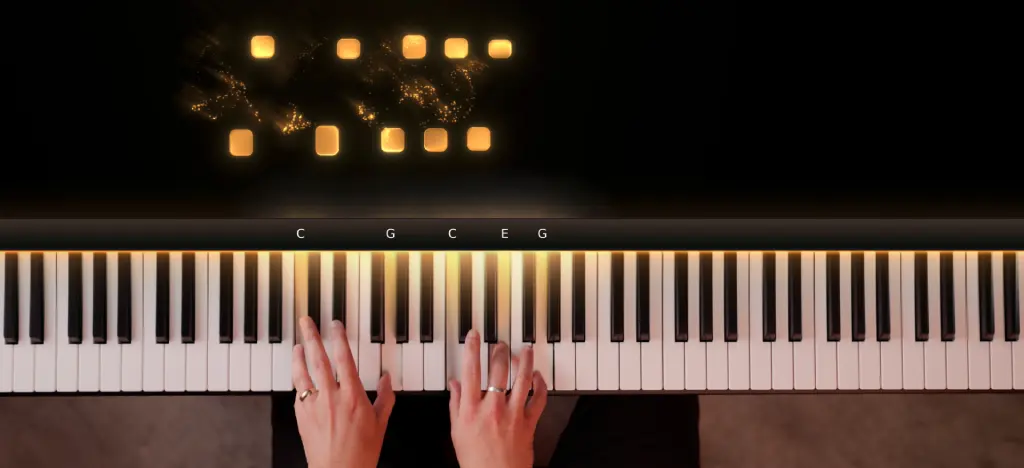 ✔️ No sight-reading required
✔️ No sight-reading required
You don’t need to read sheet music to take any of our courses — including piano. You learn through patterns, sound, movement, or memory. Much easier if you’re dyslexic, ADHD, or just never got on with black dots on a page.
✔️ Go at your own pace
There’s no time limit, no pressure. Rewind, pause, repeat. Take a break. Do one thing a day. It’s all designed to work around your focus and energy.
✔️ Visual and pattern-based learning
Our courses use diagrams, finger shapes, keyboard views and clear video — not dense theory. Great for visual thinkers and anyone who struggles with traditional methods.
✔️ Play real music from day one
You’re not stuck playing exercises for weeks. You’ll learn chords, riffs, and full songs quickly — which keeps motivation up and frustration down.
✔️ No judgement
No teacher raising an eyebrow. No fear of messing up in front of others. You can learn privately, try things your way, and take the time you need.
✔️ Artie gives feedback, but gently
Our AI piano teacher Artie listens as you play, spots mistakes, and gives instant spoken feedback — without pressure. He adapts your next exercises to match how you learn.
✔️ Fits your brain — not the other way round
Whether you’re autistic, ADHD, dyslexic, or just never clicked with the old-school way, ArtMaster is built to meet you where you are.
Learn music your way — with real teachers or real-time AI
At ArtMaster, our courses are built by real musicians — and designed with flexibility, creativity, and all learners in mind.
No sheet music required
Visual, auditory, and step-by-step approaches
Learn at your own pace, in your own space
Real songs, real teachers — not classroom drills
Explore courses taught by artists who actually understand creativity.
👉Join the waitlist for Artie, your personal AI piano teacher who listens, gives feedback, and truly adapts to you.
FAQs: Neurodivergence & music learning
1. Can neurodivergent people really learn music effectively?
Absolutely — but not always through traditional methods. Research shows that neurodivergent learners often thrive with visual, tactile, and adaptive approaches to music, rather than rigid sight-reading and repetition. What’s needed is a method that fits the brain, not the other way round.
📚 Source: Doyle, N. (2020). Neurodiversity at work. British Medical Bulletin, 135(1), 108–125.
2. What are the most common barriers for neurodivergent learners in music?
Structure-heavy teaching, reliance on sheet music, and a lack of flexibility are major roadblocks. These approaches can clash with attention differences, processing styles, and anxiety — which often leads to frustration or giving up entirely.
💡 Neurodivergent learners are more likely to succeed with chunked learning, pattern-based instruction, and immediate feedback.
3. I have ADHD — is it even possible to stick with learning an instrument?
Yes, but it helps if the method is engaging, not repetitive. Short, varied sessions, real music from day one, and tools that respond in real time (rather than waiting for a teacher's next lesson) tend to work better for ADHD brains.
🎧 One study found that musical training improves attention regulation in ADHD learners — when it’s adapted to their pace and strengths.
(Zuk et al., 2014, Journal of Cognitive Neuroscience)
4. Do I need to read music to be musical?
No. Some of the greatest musicians — from Paul McCartney to John Lennon to Hans Zimmer — never mastered traditional notation. Neurodivergent learners often absorb music by ear, by pattern, or by feel. Reading is one tool, not the only one.
🧠 Many dyslexic learners struggle with standard notation but excel in memory, improvisation, and audio learning.
5. Are there specific tools that work better for neurodivergent music learners?
Yes. Visual apps, loop-based platforms, AI feedback tools, and courses that avoid pressure or perfectionism can all help. Think: coloured notes, real songs (not drills), video-based instruction, and AI teachers like Artie that adapt to how you play.
🤖 Artie, the AI piano teacher from ArtMaster, gives spoken feedback in real time — no pressure, no sight-reading required.
6. I’m anxious about starting music again — where should I begin?
Start somewhere forgiving. Pick an instrument you’re drawn to, not one you “should” learn. Use tools that let you pause, rewind, and try again without pressure. And forget perfection — most musicians are just trying things out until something feels good.
🪴 Progress isn’t linear. Especially if you’re neurodivergent. But the right environment can make a huge difference.
About the author
Matt Ford is a musician, teacher, writer, and lifelong student of sound.
With years of experience in both performing and teaching, he shares practical advice through ArtMaster to help musicians at every level build skill and confidence in their playing.
